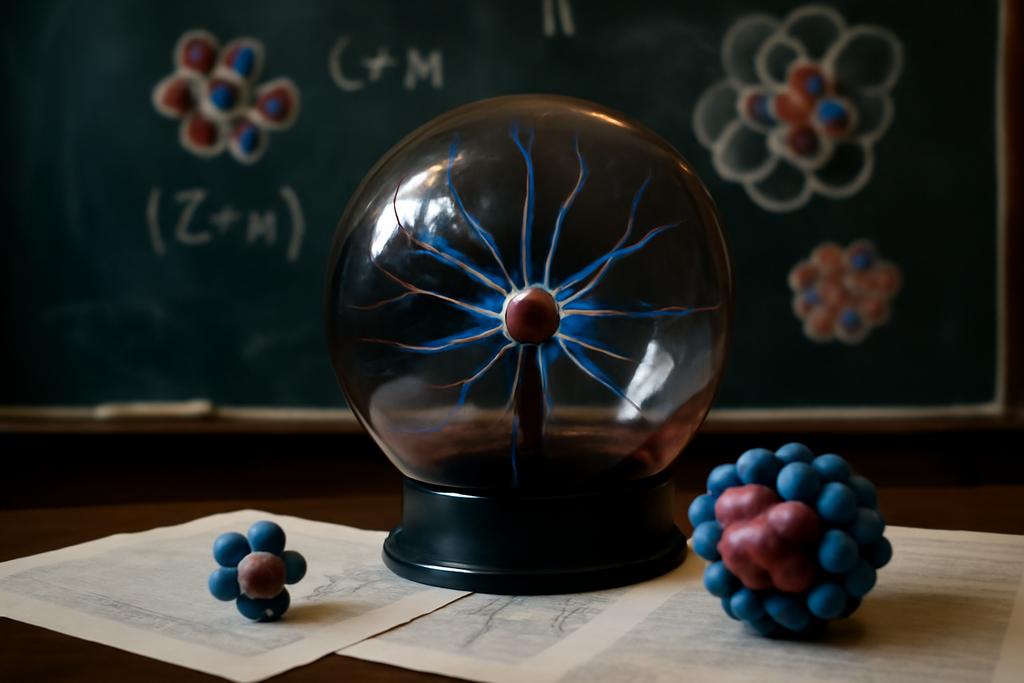Imagine a universe where the building blocks of matter—atoms—surprise us with their behavior. We think we understand the rules, but then something unexpected emerges: a low-lying resonance in a core-neutron interaction that, against all odds, helps create a stable, three-body bound state.
This isn’t science fiction. Recent research from the University of Tennessee, Knoxville, Oak Ridge National Laboratory, and the University of Chicago, led by Lucas Platter and Dam Thanh Son, explores precisely this phenomenon. They’ve uncovered a new type of nuclear universality, challenging long-held assumptions about how we understand these fundamental systems.
The Unexpected Stability of Two-Neutron Halo Nuclei
Two-neutron halo nuclei are like delicate cosmic flowers, intricate arrangements of a core nucleus surrounded by two loosely bound neutrons. Think of the core as the center of a flower, and the neutrons as petals. These nuclei are famously unstable, existing only for a fleeting moment before decay. However, certain two-neutron halo nuclei show a bizarre stability. The researchers focus on these anomalies, seeking to understand why they exist.
For decades, theoretical models of these systems have relied on a concept called ‘Efimov states,’ named after physicist Vitaly Efimov. Efimov states arise from complex three-body interactions, requiring a three-body parameter to make sense of the mathematics. Think of it as an additional, mysterious ingredient in our understanding of these systems.
Platter and Son’s research dramatically changes the situation. Their work shows that under certain circumstances, these ‘extra’ ingredients are unnecessary. The researchers found that if a low-energy resonance—a specific energy state—exists in the interaction between the core nucleus and a single neutron, the need for that extra three-body parameter disappears. The system stabilizes itself!
The Power of Resonance
This resonance is like a hidden key unlocking a new understanding of two-neutron halo nuclei. In physics, a resonance is a sort of amplification of a specific energy, think of it like a tuning fork that vibrates intensely when exposed to a specific frequency. It’s a sweet spot of interactions, and the presence of this sweet spot profoundly affects the system’s stability. It allows for the appearance of a three-body bound state.
This is significant because it simplifies our understanding of a complex three-body system. Previously, the presence of a three-body force—that extra ingredient—was thought essential to understand the stability of these systems, but this research demonstrates a path forward, one based solely on two-body interactions, opening new avenues for understanding and modeling nuclear systems.
A New Universal Law?
The researchers’ findings suggest a new kind of universality in nuclear physics—a set of fundamental laws governing these systems, similar to how the laws of gravity govern planetary motion. This universality exists despite the highly complex and chaotic-seeming environment inside the nucleus. It’s a testament to the hidden elegance of the natural world.
This new universality is particularly exciting because it doesn’t require the use of the problematic three-body parameter. This parameter is mathematically awkward, introducing uncertainties in calculations and making predictions more difficult. Platter and Son’s work offers a much cleaner framework, providing a sharper understanding of these exotic nuclei.
Implications for 22C
The researchers applied their theoretical framework to the carbon isotope 22C, a well-known two-neutron halo nucleus. Their analysis suggests that the previously reported core-neutron resonance isn’t quite strong enough to account for 22C’s observed stability based on their new model. This highlights the significance of their work, demonstrating how theoretical insights can be used to refine our understanding of previously measured phenomena.
The implications are significant. For years, we’ve understood two-neutron halo nuclei through the lens of Efimov physics, but Platter and Son’s research reveals a previously unseen mechanism for their formation and stability, potentially revising fundamental ideas in nuclear physics and providing a more robust framework for understanding other, similar systems.
The Future of Nuclear Physics
The work by Platter and Son is a remarkable step forward in our understanding of nuclear physics. Their findings not only simplify our models but also offer a new lens through which to analyze these complex systems. By removing the need for a troublesome three-body parameter, their work offers a more elegant and intuitive picture of nuclear structure, opening up many avenues for future research.
Future work will likely focus on refining and extending this new theoretical framework, applying it to a broader range of nuclei and exploring its implications for other aspects of nuclear physics. The implications of this research reach beyond simple nuclear structure; it promises to refine and improve our understanding of fundamental interactions at the atomic level, possibly impacting fields like astrophysics, materials science, and even nuclear energy.










